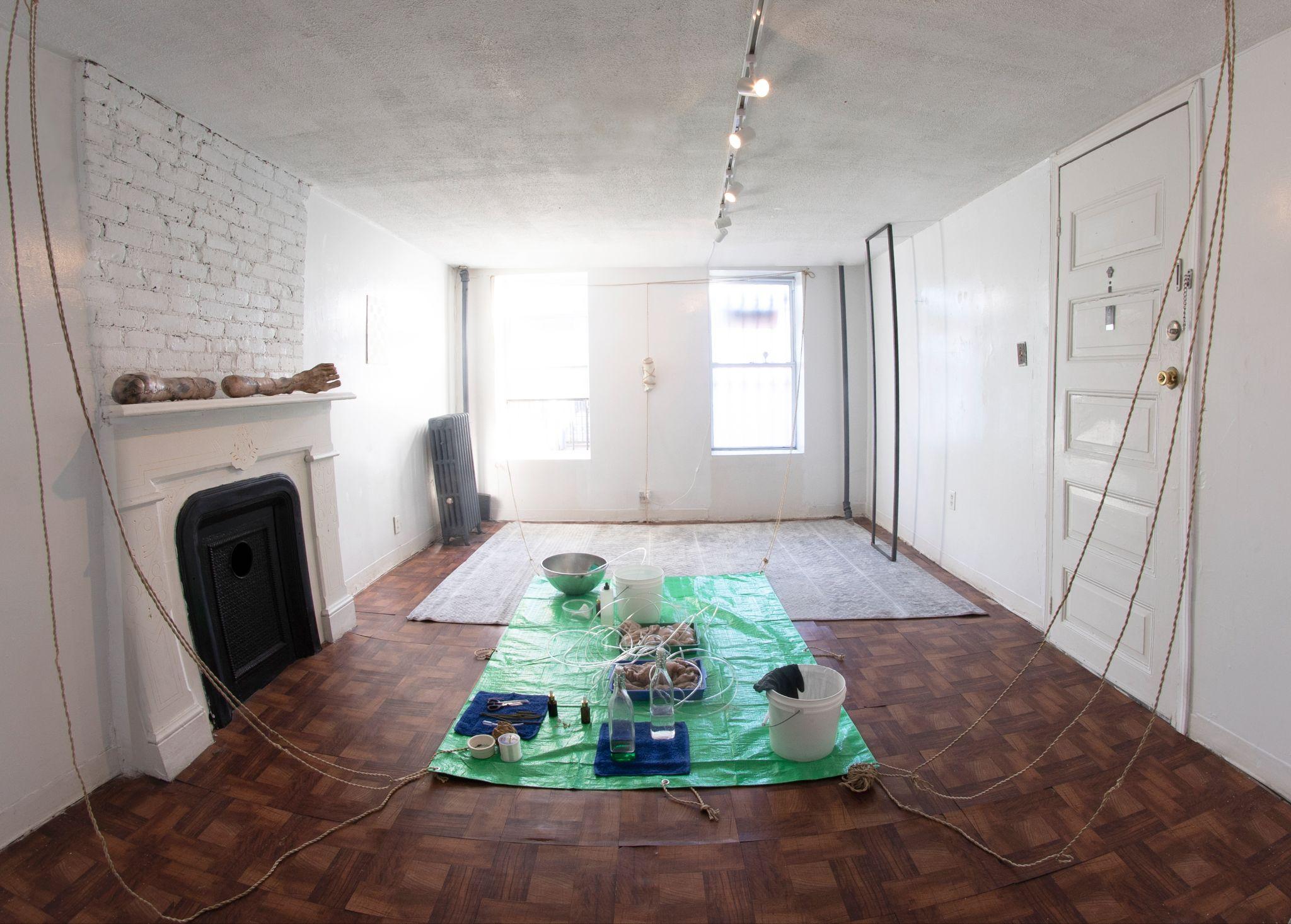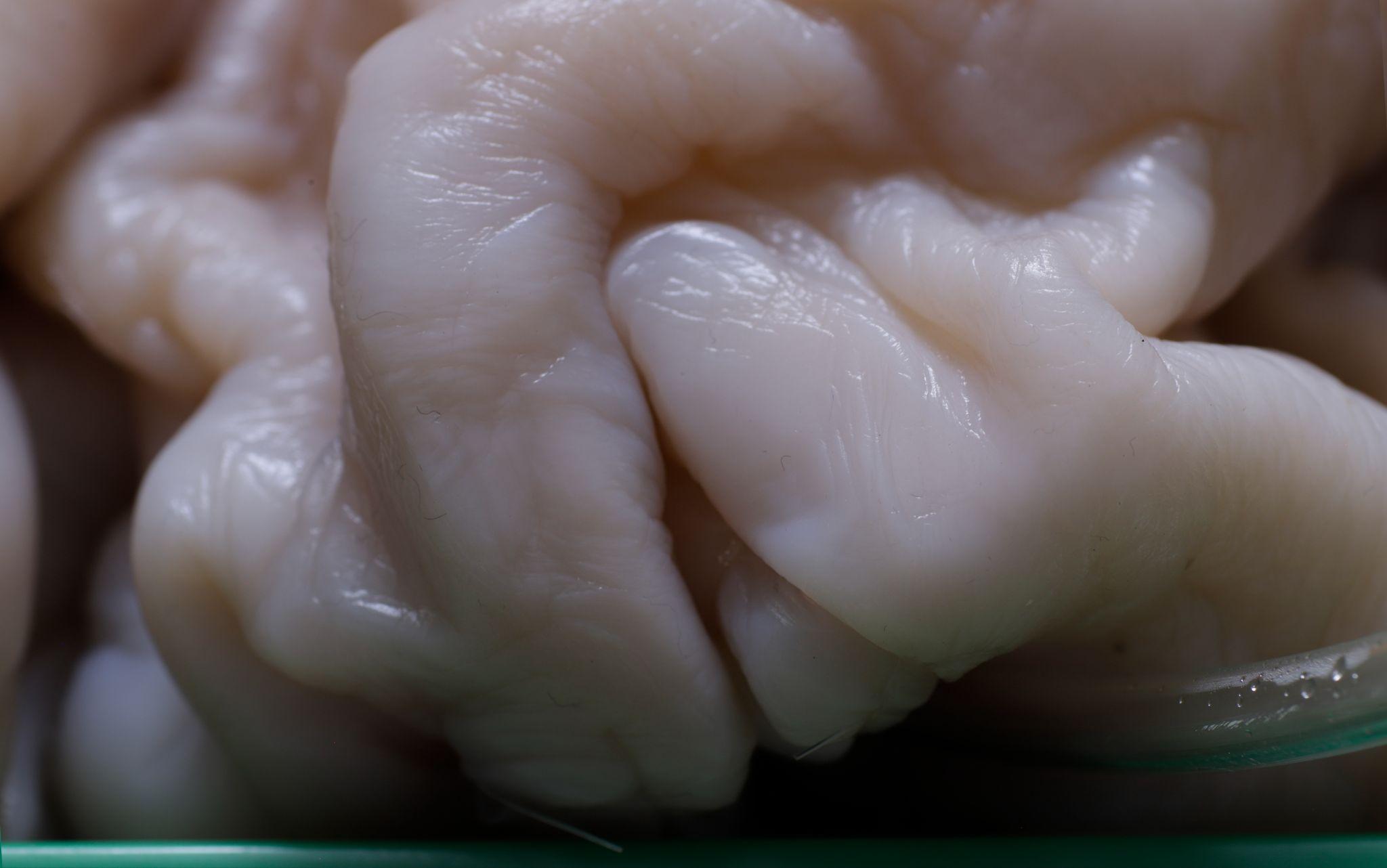Growing Pains: Anna Ting Möller’s Symbiotic Sculptures


In her 1935 poem Ja visst gör det ont, Swedish writer Karin Boye contemplates the inevitability of pain that precedes a dramatic transformation, using the coming of spring as a metaphor: “Yes, of course, it hurts when buds are breaking, / hurts for that which grows / and that which bars.”
Artist Anna Ting Möller’s solo show at Tutu Gallery, which borrows its name from the poem, dwells on resonant themes. “grafting – for that which grows and that which bars” contemplates the discomfort of creation and transformation. The show opened in Bed-Stuy, Brooklyn, in a winter during which the borough saw its biggest snowfall in two years. Onlookers gathered in the intimate gallery space one frigid evening in early February to watch the activation of a work that, quite literally, breathed life into the room.

In “Whip and tongue,” Anna Ting knelt before an assortment of tubes, buckets, trays, and bottles splayed across a green tarp in the middle of the gallery. Eight sticks of incense, placed in a semicircle around the artist, were lit and then quickly extinguished, each put out by a breath. Then Anna Ting turned their attention to the work’s centerpiece: a large, moist mass of folds and bulges the color of pale flesh, with several feet of clear plastic tubing protruding from its sides. The artist perched the open ends of the tubes between their lips and blew. With every exhalation, the mass swelled, as if inhaling. Wet mounds grew to twice their size, then collapsed, when the artist ran out of breath and the air channel was interrupted. The performance was a pure form of artistic intervention, a work that can only breathe when its creator does.

The pulsating mass in the middle of the room was the fresh form of Möller’s primary sculptural medium: SCOBY, or the symbiotic culture of bacteria and yeast, one of the main ingredients in kombucha production. When preserved correctly, the SCOBY, suspended in liquid, creates a slippery, gelatinous film the color of flan. Its slick surface creates soft folds with an uncanny resemblance to human skin.
If removed from its origin, the substance shrinks and wrinkles, resembling paper as it dries. Other sculptures in the show utilize the SCOBY in this different form. The papery film retains some of the peach hues of its wet state, sometimes deepening into a rich rust color, but it can also turn bone white, mottled with deep patches of gray. When wrapped around human forms, dried SCOBY gives the shape a bruised, corpse-like quality. In an untitled piece, patches of the dried culture are stitched with nylon thread around a porcelain sculpture of a knobby leg. The disembodied limb, lying prone atop the gallery’s fireplace, ponders a natural end to the living mass seen during the show’s opening night performance.
Kombucha SCOBY plays a key role in Möller’s practice and is deeply entwined with the artist’s history. Born in Hunan, China, they were two years old when a European family adopted them. The artist moved to Sweden, then in 2015 traveled back to their birthplace in China in search of their birth mother. Möller did not find her but instead returned with a different kind of origin story: the SCOBY that would become the center of their practice was a gift from a woman they met in Hunan.

The SCOBY turns nine this year. A near decade has passed of keeping the culture alive by feeding it tea and sugar and protecting it from contaminants. The SCOBY’s delicate chemistry makes it subject to certain rules; a severed piece cannot be returned to the group for fear of affecting the original culture. The medium’s parallels with birth are clear – living beings cannot go back to being unborn – but so is its relationship to creation. Once removed from their origin, pieces of SCOBY take on a new function as the materials in the artist’s sculptures or performance art.
Yes, of course, it hurts, to be severed or transformed in ways that feel irreversible. But Boye’s poem, and Möller’s show, also meditate upon a wonderful truth: that the existence of pain may also signal the coming of new life.
grafting – for that which grows and that which bars is on view at Tutu Gallery in Bed-Stuy, Brooklyn, through March 16, 2024.
You Might Also Like
“Parasites and Vessels” Conveys the Resilience of Immigrant
Body Spirit Geology: Women Artists Working with Metaphysical Presence
What's Your Reaction?
Aida Ylanan is a journalist based in New York. She currently writes for the Los Angeles Times and has previously worked at the Hammer Museum and the Center for Art and Thought. She has produced commentary, lectures, interviews, and visualizations on the arts and literature. She studied statistics and English at UCLA.

